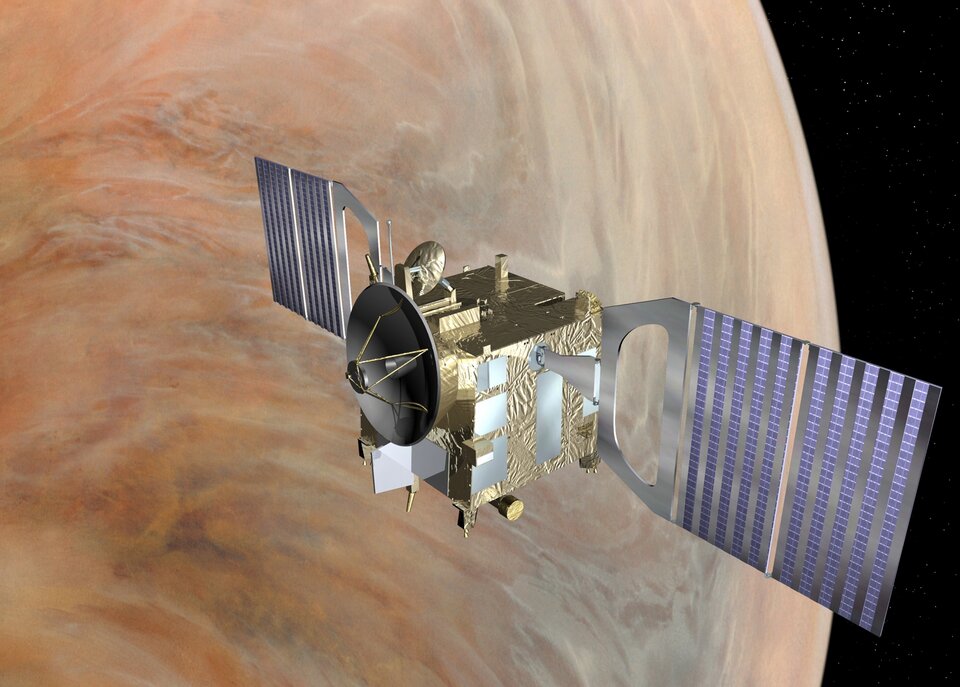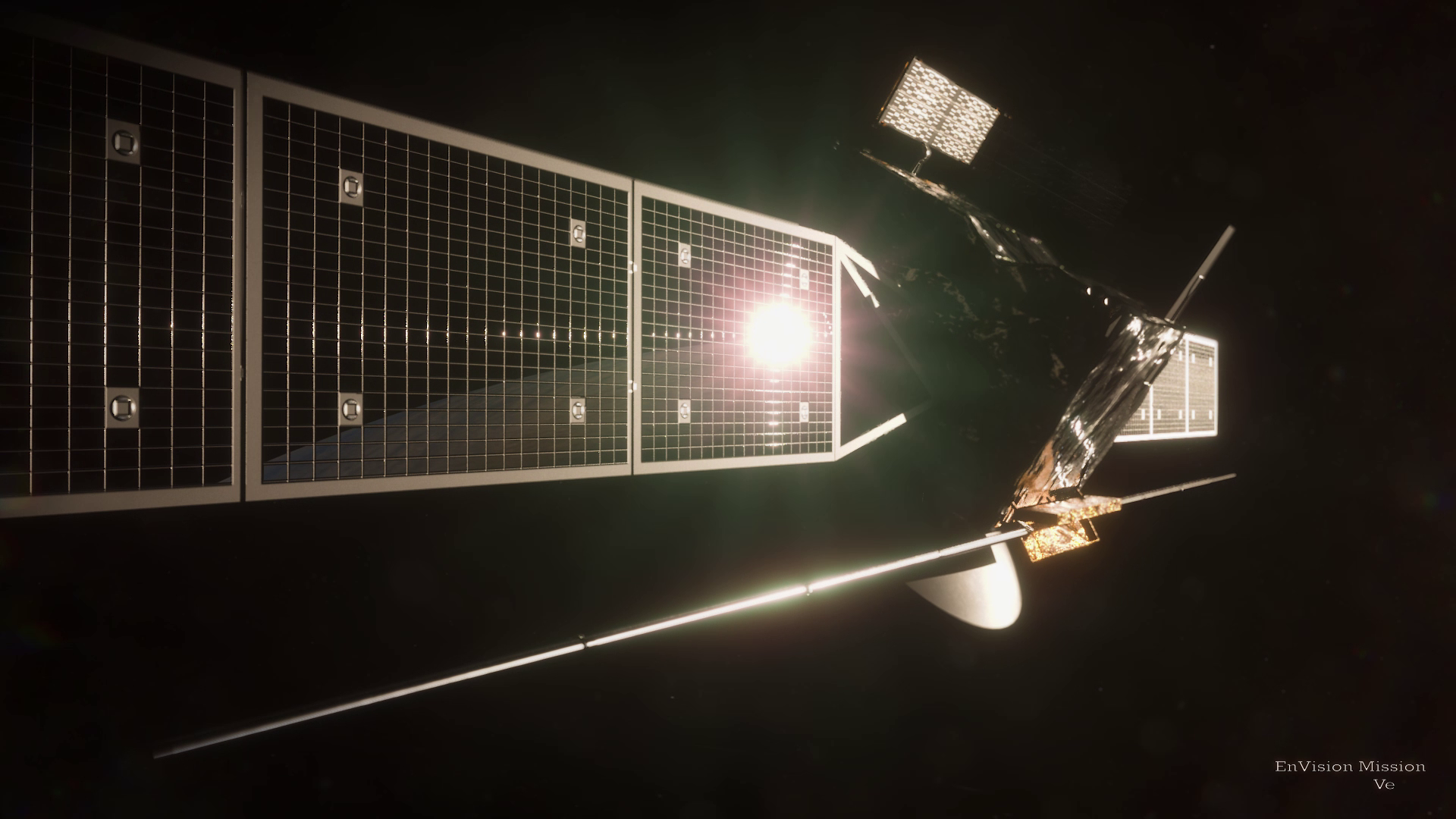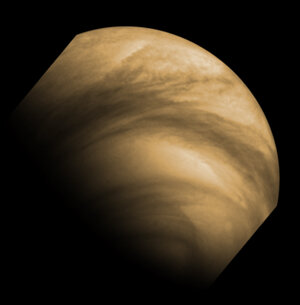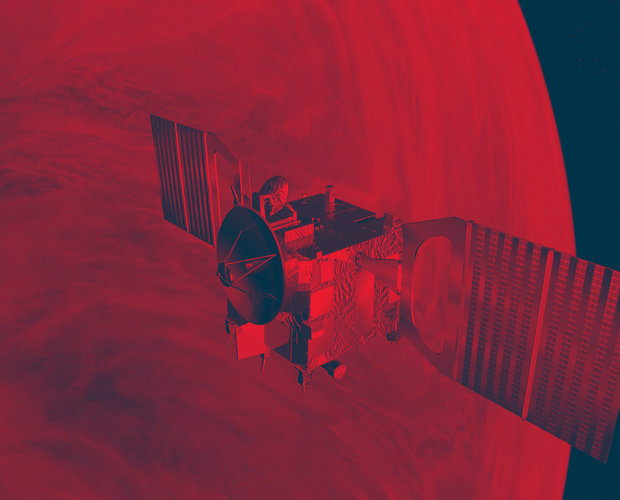Envision factsheet
Overview of the Envision mission

Name: Envision
Planned launch: November 2031
Mission: Understanding why Earth’s closest neighbour, Venus, is so different
Status: In development. On 28 January 2025, the European Space Agency (ESA) awarded a contract to Thales Alenia Space (TAS) to build the Envision spacecraft.
Partnership: Envision is an ESA-led mission in partnership with NASA, with NASA providing the Synthetic Aperture Radar (VenSAR) and Deep Space Network support for critical mission phases (see below for more information on European contributions to Envision)
Why Venus: Venus is the most Earth-like of the Sun’s terrestrial planets in terms of its size, composition and distance from the Sun. Yet at some point in planetary history, the two started to evolve very differently. Venus today is far too hot to host liquid water at its surface, but it may have had a more Earth-like climate for billions of years before developing a runaway greenhouse effect. Hence, Venus provides a natural laboratory for studying how habitability – or the lack of it – evolved in the Solar System.
Objectives: Envision will be the first mission to investigate Venus from its inner core to its upper atmosphere, characterising the interaction between its different envelopes: its atmosphere, surface/subsurface and interior. It aims to provide a holistic view of Venus, studying the planet’s history, activity and climate
The Envision mission will address a number of key questions about our neighbour:
- How have the surface and interior of Venus evolved?
- How geologically and tectonically active is Venus today, and how active has it been over the past billion years?
- How are Venus’s atmosphere and climate shaped by geological processes?
- Did Venus have oceans – and could evidence of past water remain in the oldest rocks found on Venus’s surface?
- How does Venus lose heat, and when and why did the runaway greenhouse effect begin at the planet?
Forebears/legacy: The mission builds on the success of missions including ESA’s Venus Express (2005–2014); the Soviet Venera Programme (1961–1984); NASA’s Pioneer Venus mission (1978–1992); and NASA’s Magellan Orbiter (1989–1994). It will also utilise findings from JAXA’s Akatsuki mission, which entered orbit around Venus in 2015. For summaries of these missions and their scientific achievements, see Past missions to Venus

Dimensions: Envision will be a roughly rectangular three-axis stabilised satellite weighing 4.1 tonnes fully fueled at launch, measuring approx. 2 m x 2 m x 3 m in stowed configuration, with two deployable solar arrays.
Instruments: Envision’s science payload consists of
- VenSAR, a dual polarisation S-band radar also operating as microwave radiometer and altimeter, which will map the surface of Venus
- VenSpec-M, VenSpec-U and VenSpec-H, three optical spectrometers operating in the UV and infrared, which will map trace gases above and below the clouds, including volcanic gases, and map the surface composition and emissivity
- Subsurface Radar Sounder (SRS), a high frequency sounding radar to probe down to one kilometre below Venus's surface
- a Radio Science Experiment (RSE), which will use the satellite radio link to map the planet’s gravity field and constrain its internal structure, and to measure the composition and structure of Venus’s atmosphere
Selection: The mission was selected by ESA’s Science Programme Committee on 10 June 2021 as the fifth Medium-class mission in the Agency's Cosmic Vision. It was adopted on 25 January 2024.
Launch: Envision is targeting a launch in November 2031. The mission is foreseen to launch from ESA’s Spaceport in Kourou, French Guiana on an Ariane 64 launch vehicle.
Journey and orbit: Envision will reach Venus after a 15-month cruise. After arriving, the spacecraft will spend 11 months aerobraking through Venus’s atmosphere to progressively reach its science orbit, a low Venus quasi-polar orbit at a variable altitude of between 220 and 510 km and with an orbital period of about 94 minutes.
Lifetime: Total nominal science period of six Venus sidereal days (four Earth years), with possible extension.
Contributions by ESA member states: ASI, DLR, BelSPO and CNES will respectively lead the procurement of the SRS, VenSpec-M, VenSpec-H and VenSpec-U instruments. The radio science experiment is led by institutes in France and Germany. Launch and operations will be supported by ESA’s Mission Operations Centre (MOC) at ESOC (Darmstadt) and Science Operations Centre (SOC) at ESAC (Madrid), with Instrument Operations and operational interfaces distributed across Instrument Teams.
Envision mission facts
Envision will combine observations at ultraviolet, infrared, microwave and high frequency radio wavelengths to study geological and atmospheric processes at a range of scales, from the core to the upper atmosphere of Venus.

The spacecraft will follow up on unanswered questions raised by earlier missions to the planet including ESA's Venus Express, which focused on atmospheric research but revealed an enigmatic planetary surface with signs of geological activity. Additional questions remain over Venus’ climate and history of water.
Recent research strongly suggests that the evolution of the atmosphere and interior of Venus are coupled, emphasising the need to study the atmosphere, surface, and interior of Venus as a system.
NASA’s contribution to Envision, VenSAR, builds on decades of planetary radar experience dating back to the NASA/JPL Magellan radar mapping mission launched to Venus in 1989.
Envision is the first mission to Venus with a subsurface radar sounding instrument (SRS), which will directly measure the planet’s subsurface features.
Furthermore, its VenSAR radar will be the first instrument to image parts of the planet at a very fine resolution of 10 metres and to perform polarimetric imaging, to further advance our knowledge of Venus’ surface.


Access the video














 Germany
Germany
 Austria
Austria
 Belgium
Belgium
 Denmark
Denmark
 Spain
Spain
 Estonia
Estonia
 Finland
Finland
 France
France
 Greece
Greece
 Hungary
Hungary
 Ireland
Ireland
 Italy
Italy
 Luxembourg
Luxembourg
 Norway
Norway
 The Netherlands
The Netherlands
 Poland
Poland
 Portugal
Portugal
 Czechia
Czechia
 Romania
Romania
 United Kingdom
United Kingdom
 Slovenia
Slovenia
 Sweden
Sweden
 Switzerland
Switzerland































